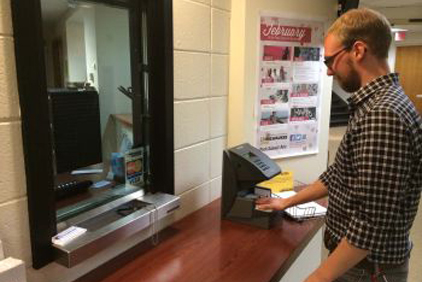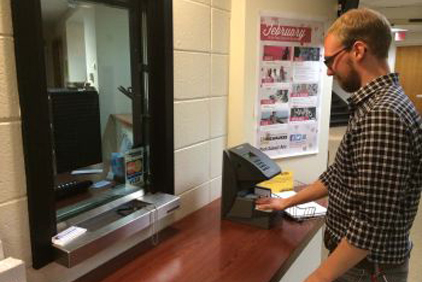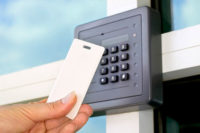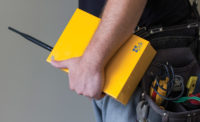
|
| Fed up with homeless people and strangers wandering into buildings at the Peck School of Arts at the University of Wisconsin-Milwaukee, students took it upon themselves to raise the money needed to install Schlage HandKey biometric readers to increase security. |
After repeated intrusions highlighted the lax security situation at the Peck School of the Arts at the University of Wisconsin-Milwaukee (UWM), art students took matters into their own hands by raising the money necessary to fund a project that led to the installation of Schlage HandKey readers on the six-building complex. Thirteen readers were placed on the exteriors of buildings and several others were installed to manage access via certain elevators.
“We asked Anixter, our integrator, what would be a good solution to stop homeless people and strangers from entering the buildings, where art students can be found working on projects day and night,” says Randy Trumbull-Holper, director of facilities for the Peck School of the Arts. “They, along with a locksmith on our campus, suggested that the students consider biometric hand readers.”
The UWM students initially bristled at the notion of hand readers, but warmed up to the biometric solution once they learned that the readers would not record fingerprints. Instead, the Schlage Handkey reader uses hand geometry technology. The reader simultaneously analyzes more than 31,000 points and instantaneously records more than 90 separate measurements of an individual’s hand, including length, width, thickness and surface area, to verify the person’s identity. In conjunction with entering a PIN, now only registered art students are able to gain access to the facilities.
According to Trumbull-Holper, students chose the HandKey readers for several reasons beyond the high level of security they would provide. The students appreciated the simplicity of the process because they would no longer need to bring special ID cards or keyfobs to the school. The administration also was happy that the HandKey readers could operate as a standalone system and store authorized users in each unit without having to integrate with the campus’ entire access control system. Another advantage is that the hand readers still perform effectively if art students have stained or paint-splashed hands, a very important consideration in this type of application.
Trumbull-Holper manages the system with Schlage HandNet for Windows software and has a team who helps enroll students and faculty.
“Every year, we update the students enrolled in the system,” he says. “Any student who took just one class and no longer needs access to our buildings is removed.
“Because this system was fully paid for by the students, we plan to keep it for a long time,” he adds. “To do anything else would be a disservice to something the students wanted and paid for themselves.”


